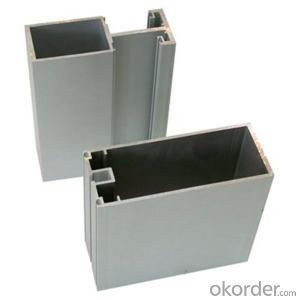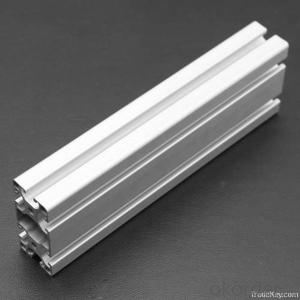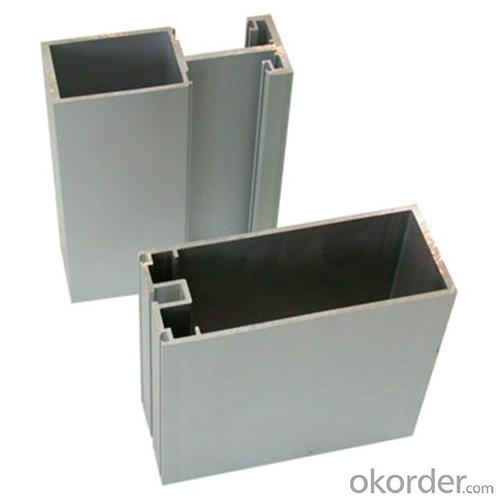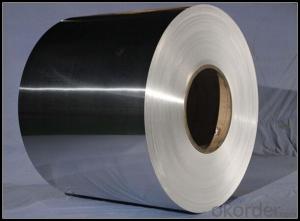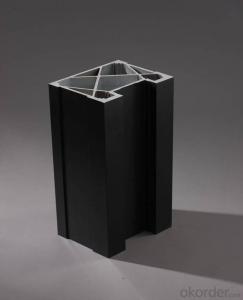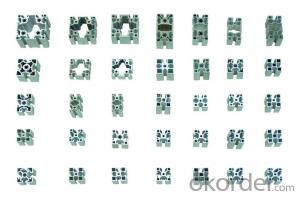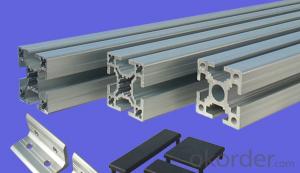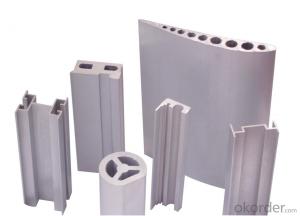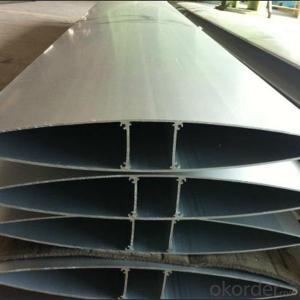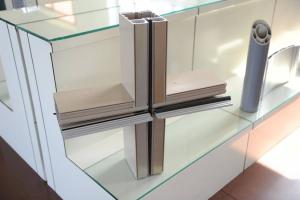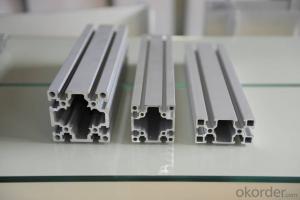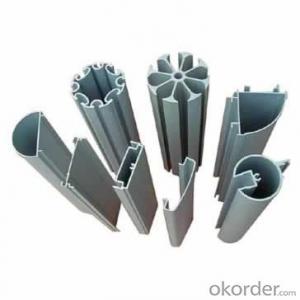Custom Powder Coated Aluminum Alloy Profiles for Kitchen Cabinet Frame Door Frames
- Loading Port:
- Shanghai
- Payment Terms:
- TT OR LC
- Min Order Qty:
- 5 m.t.
- Supply Capability:
- 10000 m.t./month
OKorder Service Pledge
OKorder Financial Service
You Might Also Like
Specification
1. Specification of Aluminum Alloy Profiles for Kitchen Cabinet Frame Door Frames
Alloy | AA1050,AA1060, AA1070, AA1100 |
Temper: | H12, H14, H16, H18, H22, H24, H26, H32,HO, F |
Thickness: | 0.10-500mm |
Width: | 10mm- 2200mm |
Standard: | GB/T3880-2006, ASTM, ISO, EU standard |
Special Specification is available on customer’s requirement | |
2. Application of Aluminum Alloy Profiles for Kitchen Cabinet Frame Door Frames
wall cladding, ceilings, bathrooms, kitchens and balconies, shutters, doors,windows…
3. Feature of Aluminum Alloy Profiles for Kitchen Cabinet Frame Door Frames
Surface Quality :
Be free from Oil Stain, Dent, Inclusion, Scratches, Stain, Oxide Decoration, Breaks, Corrosion, Roll Marks, Dirt Streaks and other defect which will interfere with use,
Mochenical Property:
Chemical Composite and Mechanical Property
4. Certificate:
SGS and ROHS(if client request, paid by client), MTC(plant provided), Certificate of Origin(FORM A, FORM E, CO), Bureau Veritas and SGS (if client request, paid by client), CIQS certificate
5. Image of Aluminum Alloy Profiles for Kitchen Cabinet Frame Door Frames
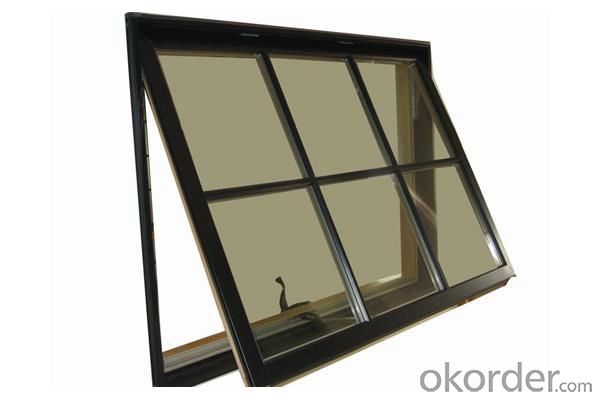
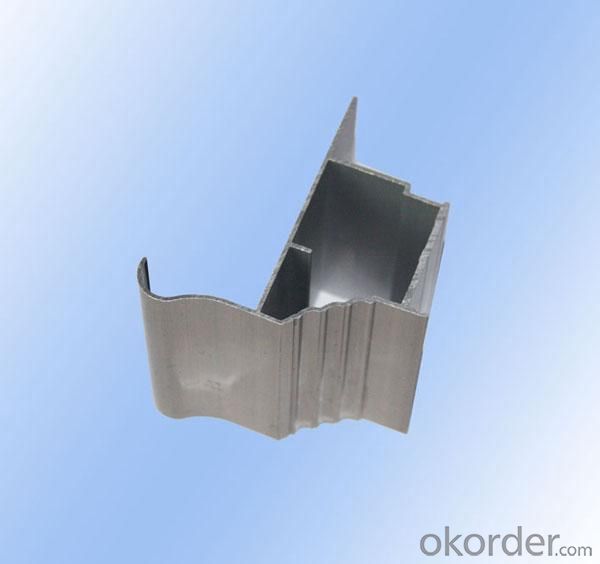
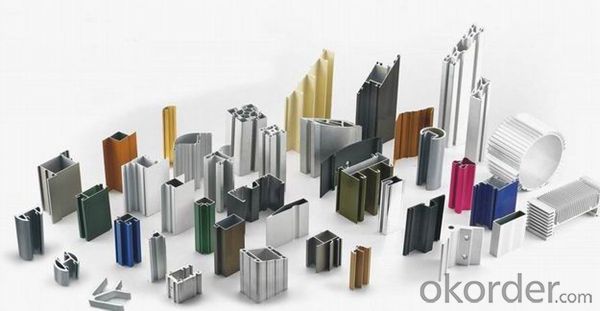
6. Package and shipping of Aluminum Alloy Profiles for Kitchen Cabinet Frame Door Frames
First, plastic cloth with drying agent inside; Second, Pearl Wool; Third, wooden cases with dry agent, fumigation wooden pallets, aluminum surface could cover blue PVC film
7. FAQ
Question 1: What is your MOQ?
We accept one ton per type for an order. But the detail we could negotiate.
Question 2: What is your normal terms of payment?
We always trade with you by T/T. But we also accept the L/C as you require.
Question 3: How many kinds of the surface treatment we can choose?
You could choose different color of powder coated. Anodized of black. matte silver, nature, champagne, bronze color. Mill finished. Wooden finished and printed.etc.
Question 4: Can you supply OEM services?
We offer OEM services for 17 years.
Question 5: How many days for opening the mould?
Normally about 10 days.According to the difficulty of your drawing.
Question 6: Can i choose the package what i want?
Yes, of course. We offer various kinds of package.e.g.PE foam. Shrink film. Wrapping paper.
But we would give you professional suggestion of package.
- Q: How do aluminum profiles contribute to energy-efficient lighting systems?
- Enhancing the energy efficiency of lighting systems is a significant role played by aluminum profiles. The lightweight and highly conductive nature of aluminum allows for efficient heat dissipation, which is crucial in maintaining the lifespan and efficiency of bulbs. By utilizing aluminum profiles, the generated heat from the light source can be effectively transferred away, ensuring optimal performance and longevity. Additionally, aluminum profiles offer versatility and the ability to accommodate various lighting components such as LED strips or bulbs, reflectors, and lenses. These profiles provide a stable and secure housing for these components, preventing any damage or misalignment that could affect the efficiency of the lighting system. Furthermore, precision engineering in aluminum profiles makes installation and maintenance easy, further contributing to the overall energy efficiency of the system. Another significant advantage of aluminum profiles is their capability to act as a heat sink. By diverting heat away from the light source, the profiles help maintain lower operating temperatures, resulting in reduced energy consumption and increased efficiency of the lighting system. This is especially important for LED lighting, as they are sensitive to heat and can experience a decline in light output if not adequately cooled. Aluminum profiles enable efficient thermal management, ensuring that LED lights operate at their optimum level, saving energy and reducing the need for frequent replacements. Moreover, aluminum is a recyclable material, making it an environmentally friendly choice for lighting systems. The usage of aluminum profiles promotes sustainable practices by reducing the demand for raw materials and minimizing waste. This aligns with the principles of energy efficiency and conservation, as it reduces the overall carbon footprint of the lighting system. In summary, aluminum profiles contribute to energy-efficient lighting systems by facilitating effective heat dissipation, providing a stable housing for lighting components, acting as a heat sink, and promoting sustainable practices. These profiles enhance the performance, lifespan, and energy efficiency of lighting systems, making them an essential component in modern lighting solutions.
- Q: The 50 series and the 60 series of aluminum profiles, which one is good?
- Of course, 60 of the good.60 and 50 refers to profiles, from the indoor to outdoor overall thickness of 60MM and 50MM. respectively60 of the cross section is larger than 50 1cm, much stronger. The glass gap that can be installed is also larger
- Q: What is the composition of aluminum profiles?
- Aluminum profiles are primarily composed of aluminum, which is a lightweight and highly malleable metal. They may also contain small amounts of other elements such as copper, magnesium, silicon, and zinc, depending on the specific alloy used. These additional elements are added to enhance the strength, durability, and other desired properties of the aluminum profiles.
- Q: How do aluminum profiles handle extreme weather conditions?
- Aluminum profiles are known for their excellent resistance to extreme weather conditions. Due to their inherent corrosion resistance, they can withstand exposure to rain, snow, UV radiation, and high temperatures without deteriorating or losing their structural integrity. Additionally, aluminum profiles have a low thermal expansion coefficient, making them highly stable and resistant to warping or cracking in extreme temperature fluctuations. Overall, aluminum profiles are a reliable choice for outdoor applications, as they can handle a wide range of weather conditions with minimal maintenance.
- Q: What are the various energy-saving characteristics that can be incorporated into aluminum profiles?
- <p>Aluminum profiles can incorporate several energy-saving features to enhance thermal insulation and reduce energy consumption. These include: 1. Thermal breaks: Inserts that reduce heat transfer between the interior and exterior of a profile. 2. Multi-chamber designs: Multiple air chambers within the profile that act as insulators. 3. Low-E coatings: Reflective coatings that reduce heat transfer. 4. Insulating glass units: Double or triple glazed units with gas fills that provide superior insulation. 5. Passive solar design: Profiles designed to maximize heat gain in winter and minimize it in summer. 6. High-performance seals: Gaskets and seals that minimize air infiltration. 7. Aerodynamic shapes: Profiles that reduce air resistance and heat loss. These features can significantly contribute to energy efficiency in buildings.</p>
- Q: Can aluminum profiles be used for swimming pool covers?
- Indeed, swimming pool covers can indeed utilize aluminum profiles. Aluminum, being both lightweight and long-lasting, is impervious to corrosion and can endure exposure to water and a range of weather conditions. Aluminum profiles can be employed to build the structure of swimming pool covers, granting them stability and reinforcement. Moreover, they can be used to fabricate sliding or folding mechanisms, allowing for effortless opening and closing of the covers. Furthermore, these aluminum profiles can be enhanced in terms of appearance and safeguarded against corrosion through powder coating or anodization. In summary, owing to their robustness, endurance, and adaptability, aluminum profiles are widely favored when it comes to swimming pool covers.
- Q: Is it possible to recycle aluminum profiles and repurpose them for construction purposes?
- <p>Yes, aluminum profiles can be recycled and reused as building materials. Aluminum is highly recyclable, and the recycling process requires significantly less energy compared to producing new aluminum from raw materials. Recycled aluminum maintains its strength and properties, making it suitable for various construction applications. This practice not only conserves natural resources but also reduces waste and environmental impact.</p>
- Q: What are the different extrusion methods used for aluminum profiles?
- There are several different extrusion methods commonly used for aluminum profiles. These methods include: 1. Direct extrusion: This is the most common method used for aluminum extrusion. In this process, a heated billet of aluminum is forced through a die using a ram. The aluminum is pushed through the die, which shapes it into the desired form. Direct extrusion is a highly efficient and cost-effective method. 2. Indirect extrusion: In this method, the billet is held stationary while the die moves towards it. The die pushes the aluminum through the stationary billet, shaping it into the desired form. Indirect extrusion is often used for more complex shapes or when a higher level of precision is required. 3. Impact extrusion: This method involves forcing a billet of aluminum into a die cavity using a punch. The punch strikes the billet with high force, causing it to flow into the die and take its shape. Impact extrusion is commonly used for producing hollow parts or tubes. 4. Hydrostatic extrusion: This method involves using a fluid, usually oil or water, to pressurize the billet and force it through a die. The high pressure of the fluid allows for greater control and precision in shaping the aluminum. Hydrostatic extrusion is often used for producing high-quality, high-strength aluminum profiles. 5. Cold extrusion: In this method, the aluminum billet is extruded at room temperature. The lower temperature helps to achieve greater strength and better surface finish. Cold extrusion is commonly used for producing small, intricate aluminum profiles. Each of these extrusion methods has its own advantages and is suitable for different applications. The choice of method depends on factors such as the complexity of the profile, desired strength, surface finish requirements, and cost considerations.
- Q: Can aluminum profiles be used for soundproofing or acoustic applications?
- Indeed, soundproofing or acoustic applications can make use of aluminum profiles. Aluminum is renowned for its remarkable ability to dampen sound, rendering it a perfect material choice for constructing sound barriers or enclosures. Its robust structural properties and capacity to either absorb or reflect sound waves effectively diminish noise transmission. Moreover, aluminum profiles can be readily tailored and manufactured into various forms and dimensions to cater to specific acoustic needs. Whether employed in walls, partitions, doors, or enclosures, aluminum profiles play a significant role in reducing sound transfer and creating a more tranquil and pleasant atmosphere.
- Q: How do aluminum profiles perform in terms of magnetic properties?
- Aluminum profiles have very low magnetic properties, meaning they are not easily attracted or influenced by magnetic fields.
Send your message to us
Custom Powder Coated Aluminum Alloy Profiles for Kitchen Cabinet Frame Door Frames
- Loading Port:
- Shanghai
- Payment Terms:
- TT OR LC
- Min Order Qty:
- 5 m.t.
- Supply Capability:
- 10000 m.t./month
OKorder Service Pledge
OKorder Financial Service
Similar products
Hot products
Hot Searches
Related keywords
